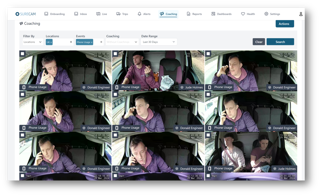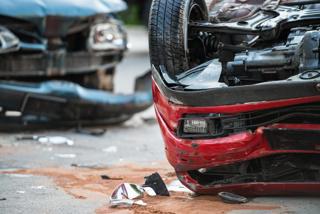The use of driver safety aids by fleets could cut the number of accidents their vehicles are involved in, according to new research.
Safety systems such as forward collision warning and speed limiters were tested during a four-year, £18 million study called the European Field Operational Test (EuroFOT).
It is now recommending that fleets consider equipping new vehicles with such systems.
The issue is cost: to pack a car with safety aids such as lane departure, collision warning/braking and blind spot information costs anything from £1,000 to £2,000.
For a fleet of 100 vehicles, that equates to at least £100,000 – although tough negotiating with the manufacturer could bring the cost down.
EuroFOT tested 1,000 cars and trucks equipped with advanced driver assistance systems, cov-ering more than 21 million miles.
It focused on eight vehicle functions that help drivers in detecting hazards and avoiding accidents, including: adaptive cruise control, forward collision warning, speed limiter, blind spot information system, lane departure warning and curve speed warning (which alerts drivers if they are approaching a bend at too high a speed).
The findings suggest that adaptive cruise control and forward collision warning could positively affect up to 5.7% of accidents on motorways.
Three-quarters of drivers involved in the test felt that curve speed warning increased safety; they found it most useful while driving on rural roads. It also enabled more defensive driving.
About 80% of drivers felt that blind spot systems increased safety, especially on urban roads and in heavy traffic.
The findings come in the wake of Government statistics which reveal that the number of people being killed or seriously injured on Britain’s roads has risen for the first time in 17 years.
Road deaths increased by 3% – from 1,850 in 2010 to 1,901 last year – and serious injuries climbed 2% – from 22,660 to 23,122 in 2011.
That’s the equivalent of five people being killed and more than 60 seriously injured every day. With estimates suggesting that at-work drivers account for one-third of casualties, that equates to a weekly death rate of 12 employees who are driving for work, and nearly 150 seriously injured.
Julie Townsend, deputy chief executive of road safety charity Brake, said: “It is unacceptable and shameful that after years of consistent casualty reductions, we are now seeing an increase in people dying and being maimed on our roads.”
Road deaths have been decreasing year-on-year by an average of 9% since 2004.
In 2010 they fell by 17%, so the figures from the Department for Transport (DfT) represent a dramatic break in the long-term trend.
As a result, Brake is calling on the Government to reinstate the national casualty reduction targets, which were abandoned last year.
It also wants to see more 20mph speed limits; graduated driver licensing; a lower drink-drive limit; and traffic policing prioritised.
However, in the past decade the reduction in road deaths has largely come from improved passive safety in new vehicles, such as airbags and crumple zones, according to the Road Safety Foundation.
The charity’s director, Dr Joanne Marden, said it was important to “get safety policies back on track”.
“For vehicles, it means continuing the introduction of safety features in four and five-star cars and accelerating the adoption of technologies such as electronic stability control and emergency brake assistance that help drivers avoid crashes,” she said.
But, while fleets could play their part by making some safety systems mandatory in company vehicles, it’s the Government that most experts are calling on to take action.
“Ministers should take this as a serious warning,” said the Institute of Advanced Motorists (IAM) chief executive Simon Best.
“Cutting road safety education, scrapping casualty targets, and reductions in local authority spending all suggest that road safety isn’t a major priority for this Government.”






















sage&onion - 11/07/2012 13:36
These gadgets would be a fantastic aid to safer driving IF they couldn't be disabled by the driver, but in all the models that I have test driven with these warning systems on they could all be disabled, or at the very least, be de-sensitised. So, from a fleet perspective there isn't a great incentive to invest in extra safety features that can be switched off by the driver.